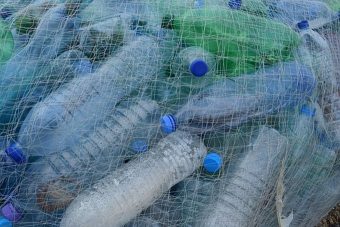
The world produces about 300 million tons of plastic every year, of which about 10% will end up in the ocean. In the US, about 30 million tons winds up in landfills, and half of that is plastic packaging used to wrap and preserve food. Jeffrey Catchmark, a professor of agricultural and biological engineering at the College of Agricultural Sciences at Penn State, has a better idea. After 10 years of research, he says he has come up with a biodegradable material that can be used in place of all that plastic packaging.
“The material’s unexpected strong, insoluble adhesive properties are useful for packaging as well as other applications, such as better performing, fully natural wood-fiber composites for construction and even flooring,” he says. “And the technology has the potential to be incorporated into foods to reduce fat uptake during frying and maintain crispness. Since the coating is essentially fiber-based, it is a means of adding fiber to diets.”
What makes it possible is the durable chemical bond that takes place between carboxymethyl cellulose and chitosan — both polysaccharides. They have different molecular charges and lock together in a complex way that makes a foundation for impervious films, coatings, and adhesives.
Cellulose comes from trees and plants. It is both abundant and inexpensive. The chitosan is derived from the shells of crustaceans such as lobsters, crabs, and shrimp. There are mountains of discarded shells available and most food processing operations are only too happy to have someone come take the stuff off their hands. The biodegradable, compostable barrier coatings have numerous applications ranging from water resistant paper, coatings for ceiling tiles and wallboard, and food coatings to seal in freshness, according to Professor Catchmark.
Besides being a dedicated scientist, Catchmark is a savvy businessman. “The challenge is that you’ve got to do it in a way that is manufacturable. It has to be less expensive than plastic,” Catchmark explains. “Because when you make a change to something that is greener or sustainable, you really have to pay for the switch. So it has to be less expensive in order for companies to actually gain something from it. This creates a problem for sustainable materials — an inertia that has to be overcome with a lower cost.” Spot on, professor.
The materials developed in the lab have performed well in testing. They exhibit strong oil and water barrier properties. They also are resistant to toluene, heptane, and salt solutions, and exhibit excellent mechanical and water vapor barrier properties in wet or dry conditions. Catchmark believes the natural coatings he has created can be further improved so they substitute economically for the Styrofoam and solid plastic used in most food containers and bottles today.
“We are trying to take the last step now and make a real impact on the world, and get industry people to stop using plastics and instead use these natural materials,” he says. “So [consumers] have a choice — after the biomaterials are used, they can be recycled, buried in the ground or composted, and they will decompose. Or they can continue to use plastics that will end up in the oceans, where they will persist for thousands of years.”
Most people don’t get into such a complex analysis when selecting which products to buy. Convenience and price are usually the only two factors that matter. If Catchmark’s products do the job and cost less, he will have made a major contribution to conquering the scourge of plastics gripping the world today.
Source: cleantechnica.com




